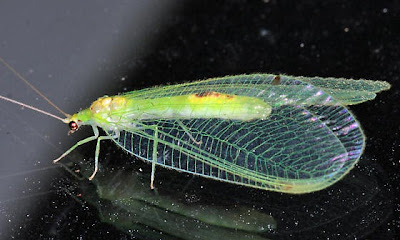 |
| Spanish Needles |
 |
| Mort's Spanish needles |
Seeds cling to passing animals (that would be us) by several methods. Spanish needles have awns, the same tiny sharp accessories that allow grass seeds to burrow into your boot socks until they reach your ankle. Awns are stiff, needle-like bristles at the tip of a floral scale of grasses and sedges as well as some other plants. They serve a function beyond transporting the seed and annoying the hiker, as they let the seed plant itself.
"The awns of wild emmer wheat spikelets effectively self-cultivate by propelling themselves mechanically into soils. During a period of increased humidity during the night, the awns of the spikelet become erect and draw together, and in the process push the grain into the soil. During the daytime the humidity drops and the awns slacken back again; however, fine silica hairs on the awns act as hooks in the soil and prevent the spikelets from reversing back out again. During the course of alternating stages of daytime and nighttime humidity, the awns' pumping movements, which resemble a swimming frog kick, drill the spikelet as much as an inch into the soil." WikipediaBidens' small yellow flowers bloom in the early fall, a time of year that can always use a few more blooms as the summer wildflowers disappear. They provide nectar for a wide variety of bees, flower flies and the common cabbage white butterfly. A number of moth larvae feed on the plant as well as other members of the aster family. Leaf beetles and aphids suck juices from the foliage and a variety of birds eat the seeds.
Spanish needles grow in a wide variety of soils and degrees of sun and therefore can be found on roadsides, glades, woodland borders and even shaded thickets. They are prolific because of their tolerance to many types of habitat and their ability to cling to your clothes and work their way into your ankles. OK, I guess they are a weed.
Note: Like other plants, common names can be confusing. There is another Spanish needle plant found on glades, Palafoxia callosa.
http://www.illinoiswildflowers.info is an good source for detailed information on many of the wildflowers and trees that we share with our neighbor to the East.
















































